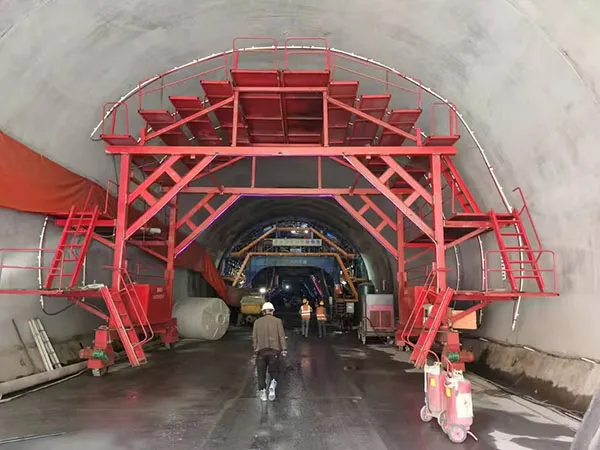Improving tunnel lining quality involves a combination of careful design, material selection, and rigorous construction and monitoring practices. The quality of a tunnel lining is crucial for its long-term stability, durability, and safety. A poor-quality lining can lead to issues like cracks, leaks, and structural degradation over time.

A high-quality tunnel starts with a solid plan before any digging begins.
Thorough Geotechnical Investigation: Before construction, a detailed investigation of the ground conditions is essential. This includes understanding the rock or soil type, groundwater levels, and potential for seismic activity. This data informs the design and helps select the most suitable lining method and materials.
Optimal Design: The tunnel lining design must be optimized to handle anticipated loads from the surrounding rock and soil. Advanced techniques like numerical modeling (e.g., Finite Element Analysis) can simulate complex ground-lining interactions to create a reliable and less conservative design.
The materials used for the lining are a major factor in its quality. The right materials enhance durability and structural integrity.
High-Performance Concrete (HPC): Using HPC with improved mechanical properties, such as higher compressive strength and lower permeability, makes the lining more durable and resistant to harsh environmental conditions.
Fiber-Reinforced Concrete: The addition of fibers (steel, carbon, or synthetic) to concrete, especially in shotcrete, enhances its tensile strength, ductility, and crack resistance.
Waterproofing: Incorporating waterproofing measures like membranes and gaskets is critical to prevent water ingress, which can cause erosion, rebar corrosion, and structural instability.
During construction, several practices are vital for ensuring a high-quality lining.
Proper Curing: For cast-in-place concrete, proper curing is essential to prevent cracking as the concrete dries. Methods like using specialized curing compounds or panels help maintain an appropriate temperature and moisture level for optimal hardening.
Automated and Remote Technologies: Modern tunneling methods use automation to improve consistency and reduce human error. Automated systems for placing concrete, vibrating it for compaction, and applying shotcrete ensure a uniform and dense lining.
Continuous Monitoring: Throughout construction, real-time monitoring of ground and tunnel movements, as well as TBM (Tunnel Boring Machine) parameters, ensures the project stays within design specifications. Observational methods and adaptive design approaches are used to handle unexpected ground conditions as they arise.

Once a tunnel is operational, its quality must be maintained through regular inspection and, if needed, reinforcement.
Non-Destructive Testing (NDT): Technologies like Ground Penetration Radar (GPR) and ultrasonic pulse velocity (UPV) can be used to inspect the lining for internal defects like voids, cracks, and delamination without causing damage.
Reinforcement and Repair: If defects are found, various methods can be used for repair and reinforcement. For minor cracks, grouting with high-strength mortar or epoxy can seal them. For more severe damage, methods like adding a new, internal arch lining or applying fiber-reinforced shotcrete can restore structural integrity.
Ultimately, improving tunnel lining quality comes down to fostering a project-wide culture of quality. This means:
Clear Communication: All parties—client, designer, contractor, and suppliers—must be aligned on quality standards.
Accountability: Everyone on site, from the project manager to the laborer, must understand their role in achieving quality and be held accountable for it.
Proactive, Not Reactive: Focus on preventing defects rather than just finding and fixing them.
Gaofei
Address: 200m east of tulip garden, group 12 of zhangling community, hongshan street office, hongshan town, xigong district, Luoyang
Tel: +8616638856888
Contact: Gaofei Huang
Mobile: +86-18637923976
Phone: 0379-80881719/ 0379-60162687
QQ: 286827457
E-mail: gaofei@gf-bridge-tunnel.com